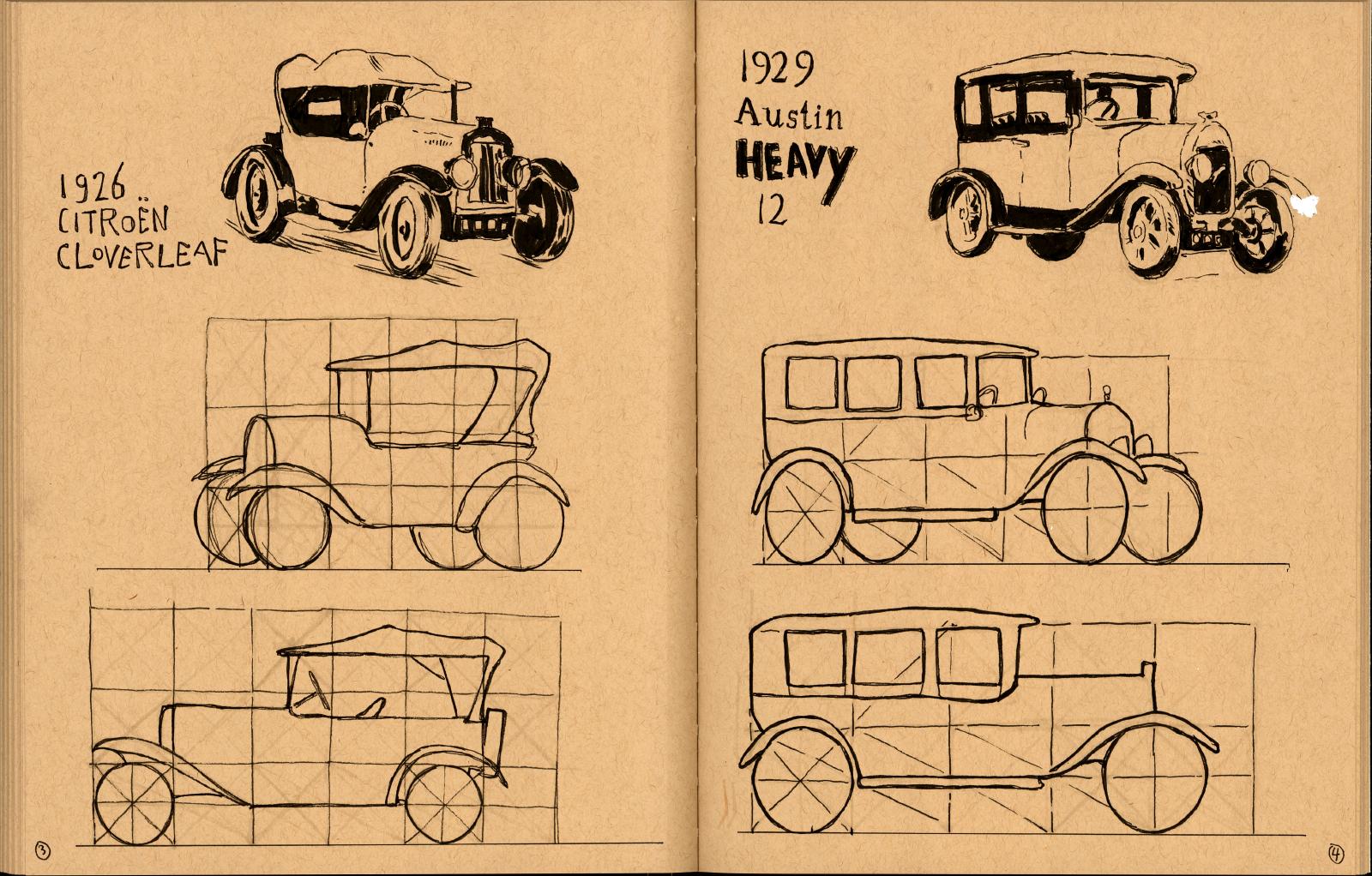#61 - You Can Learn A Lot As An Artist From Watching How Other Artists Create
You CAN become better at drawing by watching online videos.Warm-Up Drawing Exercises

Sketchbook pages of my doing Peter Han's excellent Dynamic Sketching course.
Hi friend!
Week two of me going cold turkey on social media! I have withdrawal symptoms as my reflexes still try to open the social media apps that are not there anymore! I just deleted the apps, not my accounts.
When I was younger, I had a freelance job programming, and code had to be ‘compiled.’ It took three minutes, allowing me to think about what I wanted to do next. Then I got a much faster computer and compiling took thirty seconds. Suddenly, the compiler finished, and I hadn’t had time to think about what to do next!
I have this same feeling with social media gone. What should I draw now with all that extra free time?
We live in a fantastic time when we can watch our favorite artists draw in online videos. This is an amazing resource for learning.
I still consume YouTube videos because it can be relaxing to draw with a video playing in the background. It is also astoundingly instructive to watch certain videos where you see an artist draw in real-time.
I’ve taken to listening to the Super Ani Kim Jung Gi videos, the ones that went live and where people ask questions in the chat, a woman translates it to Korean, Kim Jung Gi answers, and she translates it to English or sometimes French, depending on who asked.
I find it calming as it goes at such a slow pace. I watch Kim Jung Gi draw in real-time, which is incredibly inspiring, and I also keep noticing new things he does!
I am still learning from just watching him draw. And I try to do the same thing he does. He doesn’t draw from observation; he draws from memory. And I am starting to peel away the layers that hide his secrets. I should write down my observations. If you want to be able to draw like him, all the information you need is in his videos. All you need to do is, like, you know, draw everything you saw that day in your sketchbook from memory for five hours a day every day. No biggy. Easy peasy! Right?
The contrast, though, with the rest of YouTube is stark. Its recommendation algorithms still try to lure me with thumbnails with titles that appeal to my natural sense of curiosity, tempting me to click on them. But I know they are fast-paced and designed to grab all my concentration. And frankly, many are low on information or even wrong. Most YouTubers are not experts in their fields.
I felt guilty about making tutorials because I was trying to pull you away from your sketchbook. On Youtube, though, there are videos that teach you a lot. You just have to look for it in an ocean of MrBeast copycats.
And you and I are better off opening our sketchbooks instead. Maybe with Kim Jung Gi on in the background for inspiration, though!
I find it fun to draw along with him or to copy a part of what he’s drawing to my sketchbook. People repeatedly ask the same questions, which gets annoying after a while, but there are great nuggets of information there, too.
I wrote a book review about The Talent Code and in that book he discusses the virtues of staring at top performers in your field. I found I learned a lot from imagining what it would be like to be him.
I also wrote here about the virtues of staring at your favorite artists.
Here are two of Kim Jung Gi’s videos. Check them out!
His method presents a different way of practicing; he draws things he saw earlier that day from memory. I am trying to do that, too, and I am discovering that it is liberating as you get to invent things to replace the details you forgot. It is fundamentally different from working directly from a reference in front of you as you are less enslaved to it.
I believe many people get him wrong. He explains about boxes and forms, and people go and practice drawing boxes and forms. I think he is trying to say that he sees those boxes in his mind as he draws. And he sees them clearly because his ability to visualize is so advanced. And I believe this is because he practiced drawing from memory a lot.
If you have traced art, you will know it is hard to deviate from the reference; your lines are deadly accurate and placed over the original. When you draw from observation, that becomes less so, especially if you combine different sources of reference and you get to construct things from underlying idealized and simplified forms.
It usually looks better, more lively, and more dynamic. Drawing from memory is the next step where you combine references in your head. It is honestly fun and liberating and allows for another level of creativity, the one where you fill in details you forgot.